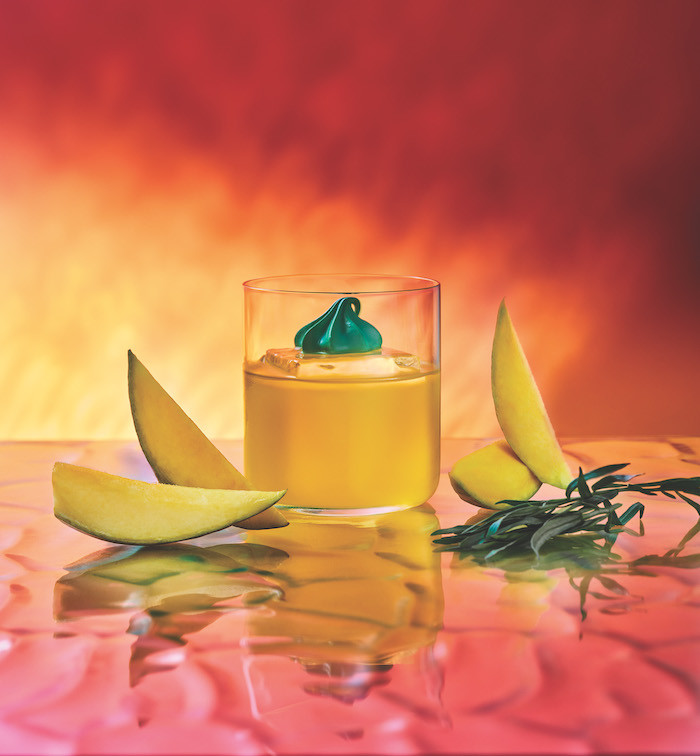
Sexy Fish’s Jérôme Allaguillemette has recently helped create Unity – a menu where alcoholic and non-alcoholic cocktails are given equal billing. He delves into the drinks-making process.
In the ever-evolving landscape of cocktail culture, non-alcoholic serves are no longer an afterthought. They go further than swapping spirits with alcohol-free alternatives. They have, in many ways, become the great test of our bartending skills as they require a more nuanced approach, involving mirroring flavours, replicating mouthfeel and achieving the depth typically provided by alcohol.
Here at Sexy Fish we’ve embraced this trend with our new Unity menu, where non-alcoholic cocktails are now given equal importance to their alcoholic counterparts, reflecting a new era where everyone, regardless of their choice to consume alcohol, can enjoy a thoughtfully crafted cocktail.
In the menu, we focus on 12 distinct flavours, each developed in both an alcoholic and a non-alcoholic version, creating 24 unique drinks. Here’s how we went about creating it.
Flavour mirroring
Alcohol serves as an adept carrier of flavour compounds, and its absence can leave a noticeable gap in the drink’s profile. Distillates and hydrosols provide a subtle, yet complex, flavour foundation that mimics the botanical notes of gin or the smokiness of whisky.
Botanical blends: non-alcoholic spirits such as Seedlip and Lyre’s use intricate botanical blends, including herbs, spices, fruits and barks, to replicate traditional spirit flavours.
Concentrated flavours and extracts: vanilla, citrus peels and spices are used to enhance complexity, often through steeping or infusion.
Creating mouthfeel
Replicating the mouthfeel and weight that alcohol contributes to a drink is challenging. Alcohol provides a certain viscosity and warmth that is difficult to emulate. Here are some strategies:
• Sugar and syrups: The viscosity of sugar syrups, like gomme syrup, can mimic the body and weight of alcohol.
• Glycerin adds a smooth, slightly sweet thickness to beverages, enhancing the body without overpowering flavour.
• Aquafaba: The liquid from canned chickpeas, aquafaba, creates a rich, foamy texture, adding weight and mouthfeel.
• Astringent ingredients: tea or wine tannin powder introduce astringency, providing the dry mouthfeel associated with alcoholic drinks. The jasmine tea tincture is a key ingredient in our non-alcoholic Sugar Snap – it not only increases the complexity of the drink, it brings herbal, bitter and astringent notes to its finish. Along with carbonic acid, the tea tincture affects the palate, drying out the consumer's mouth. This helps slow down the drinking process, mimicking the experience of consuming an alcoholic beverage.

Sensory richness
Achieving the boldness and richness of a cocktail without alcohol requires creative use of ingredients and techniques:
• Bitters and tinctures: Non-alcoholic bitters provide necessary bitterness and complexity, balancing sweet and sour components.
• Ingredients like kombucha and shrubs add layers of complexity and slight effervescence, replicating some sensory attributes of alcohol.
• Non-alcoholic cocktails can also be barrel aged to develop deeper flavours, with the ageing process in wooden barrels imparting tannins and oak flavours.
• Smoking ingredients or using smoked syrups can introduce depth and richness, replicating the earthy, robust notes often found in aged spirits.
Innovative ingredients
In addition to traditional techniques, innovative ingredients can help elevate non-alcoholic serves.
• Tamarind adds a unique tanginess and depth of flavour, mimicking the complexity of dark spirits.
• Seaweed and algae extracts provide umami and mineral notes, adding a unique dimension.
• Herbal and spice infusions – the likes of rosemary and spices such as cinnamon – are infused to create layers of flavour.
• Dairy and non-dairy creams – such as coconut milk – introduce richness and body, especially in dessert-style cocktails. In our non-alcoholic Mango Punch, we use a mixture of acids and salts, and the drink is also milk washed. The addition of milk and subsequent casein filtration help introduce lactic notes similar to those found in lacto-fermented wine.
• Meanwhile, a combination of regular and smoked Maldon salt, enhanced with vinegars, helps mimic the trigeminal sensation typically associated with ethanol consumption.
There are so many options to explore, we can really push the boundaries beyond swapping spirits for alcohol-free alternatives. In fact, we have to – the modern consumer now demands it.


